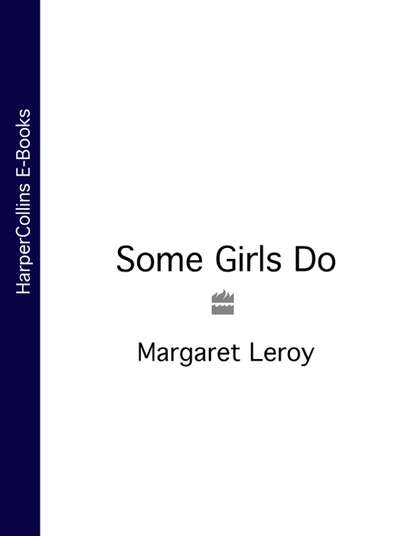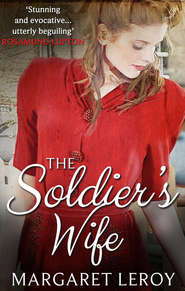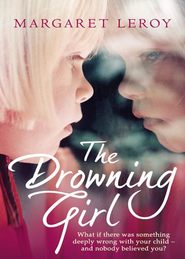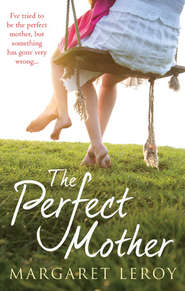По всем вопросам обращайтесь на: info@litportal.ru
(©) 2003-2025.
✖
Some Girls Do
Автор
Год написания книги
2018
Настройки чтения
Размер шрифта
Высота строк
Поля
(#litres_trial_promo) This situation, where two people who are attracted to one another share a bed in privacy but try to avoid pregnancy, implies a particular kind of sexual activity – orgasmic but not penetrative – a pattern that tends to suit women well.
And it’s a distinct change in sexual etiquette today that a woman’s agreement to share a bed with a man doesn’t essentially mean she’s assenting to intercourse. This move makes sense: it’s safer, protecting from infection as well as pregnancy, and it often means more pleasure for the woman. But in the absence of clear guidelines, it’s also potentially problematic. In the 1960s and 1970s, there was a generally recognized code: if she went back to his place late at night, and certainly if she got into bed with him, she was saying yes to penetration. Where some of us, but not all, no longer act by that code, everything depends on clear communication, and on that communication being listened to; in particular, men have to understand that for women intercourse has a different meaning to other sexual acts, because of its attendant risks. A number of cases in which men have been prosecuted for rape and subsequently acquitted – the cases of David Warren and Ben Emerson, for instance – have hinged on this issue: surely if she shared his bed, undressed, massaged him, had orgasms, slept beside him, she was assenting to intercourse? No, not anymore. Articles critical of the women in cases like these are invariably written by female journalists now in their forties and fifties, who followed a very different code when they embarked on their own sexual lives.
Over the past ten years, there’s also been something quite new in courtship customs for those in their teens and twenties, something that’s never happened before. Today women are looking at men. Looking is the first move in a more egalitarian courtship sequence for women: before you ask you have to choose – and in order to choose you have to look. Most women in this age group may not be asking – but they’re certainly looking.
Suddenly we’re surrounded by images of beautiful men. Gorgeous male bodies are used to sell ice-cream and aftershave. The unreconstructed male has lost his appeal: it’s no longer the essence of masculinity to smell of sweat and be covered in coal dust. Young men are dressing stylishly, growing their hair, even waxing their chests. Sex education videos like The Lover’s Guide include scenes that show off the man’s body as well as the woman’s – and women sometimes confess to watching those aroused male bodies with the educational soundtrack turned down. And then, of course, there are always the Chippendales, and Adonis, and all the other sexy floor shows that women flock to see.
In some innovative publications today, this new female looking is taken one stage further and the male image is deliberately presented as part of a new courtship ritual. First there was the magazine Alaska Men, an attempt to get around the acute woman shortage in Alaska: women across America wrote in to pursue relationships with men they liked the look of. Sony Magazines’ Boyfriend Catalog, which has photos of teenage boys from Tokyo and Osaka and details of their weight, height, hobbies and blood group (the Japanese equivalent of star sign) was first published in March 1995: all 170,000 copies sold. Here, Marie-Claire’s ‘Man of the Month’ featured one man at a time with a photo and a few details: women who wanted to go out with him wrote in, he chose one of them, and their evening together was described in the magazine. In September 1995, Cosmopolitan introduced their Eligible Men Service. ‘Each month, we’ll feature four single men, all looking for love.’ The photos are grouped together on one page: to find out about the men’s occupations, ‘relationship history’ and ‘idea of relationship bliss’, you have to turn over. A male way of going about things – with looking as primary – is structured into the way the men are presented; you’ve decided who you like the look of before you know anything about them. There’s an air of not quite being serious, and sometimes a lot of laughter, about all these ventures: but they’re unquestionably the first step in a new female courtship sequence.
As people get older, courtship becomes more secret. A majority of people over thirty are in long-term relationships, so much courtship over that age will be adulterous. When a friend starts to talk about ‘needing something for me’, ‘searching for something’, or even ‘having a mid-life crisis’, you know you are going to hear an adultery story. There is no knowing how many people have affairs. Research will probably underestimate the numbers involved, because some people are going to keep this secret part of their lives hidden even from sex researchers. A recent ICM survey found one in five people admitting to having an affair while in a steady relationship – and it seems reasonable to assume that this is a conservative estimate.
(#litres_trial_promo)
In her book, Adultery, Annette Lawson writes, ‘If the social institution of marriage is changing, adultery, as its underside – as another but hidden institution, deviant, like the Mafia, the rules of which are secret – must also change.’
(#litres_trial_promo) And what of the courtships by which adultery is arranged? Do the sexual negotiations in these deviant relationships mirror those in socially approved relationships, or do they have their own rules?
There are ways in which adultery is formally different from the classic courtship story. The love-into-marriage narrative is linear: the courtship gradually intensifies, with more intimacy, more sex, more disclosure, and with marriage or cohabitation as its climax. But the adultery story has a different structure. Unless it leads to the break-up of the marriages and the lovers marry one another – in which case it reverts to the shape of classic courtship – the adulterous relationship has no momentum: it isn’t ‘going anywhere’. This is reflected in our fictions. David Lean’s 1940s’ film, Brief Encounter, and Harold Pinter’s play, Betrayal, are two of the most wonderful adultery stories of the last half-century. Both start with the end of the affair, and Betrayal moves backwards in time throughout, so the moment of high drama at the end of the play is the beginning of the relationship – the disclosure of attraction.
There may also be differences in courtship behaviour where the intention is to form a secret relationship. There are some kinds of sexual strategy – playing games, blowing hot and cold, playing hard to get – in which we may create deliberate obstacles to heighten tension. It’s plausible that there will be less of this behaviour when people have adultery in mind, given that obstacles are built into affairs – practical restrictions like separations, and psychological impediments like guilt and emotional conflict. So in some ways the courtships by which adulterous relationships are negotiated may be a little different. But research suggests that, in general, adultery is arranged much like any other form of sexual relationship. The rules about who initiates, who pays, who waits for the phone to ring, are much the same.
The high rate of adultery is part of a wider picture: for a host of reasons – including the availability of contraception, women’s greater financial independence, and the fact that we live so long – our relationship structures are becoming increasingly fluid, with a new tendency toward serial monogamy. And because men tend to pair up with younger women, there is now a huge number of women in their forties and fifties who find themselves back on the dating scene. If they’re looking for another lasting relationship, they may have a sense that time is running out. Geraldine, who is forty-five and just separated, said, ‘My sister told me, “You’d better get a move on.” My solicitor said just the same – and I know what they mean. I know I’ve got about four years – I’ll keep my looks for four years …’ Often women in Geraldine’s situation find it hard to meet available men – or they may work with men they like but struggle to know how to transform a companionate relationship into a sexual one if the man isn’t making any moves. These women, more than any others, are acutely aware of the advantages of making the moves themselves. They’re also ideally placed to take the initiative because they’re experienced enough to know they can survive rejection. But, even among this group, it’s rare to meet women who ask men out.
COURTSHIP STORIES: What a man's still gotta do
Courtship is the narrative part of our sexual behaviour. With its clear goal and many potential impediments, it lends itself to story-telling. In a sense this book is about stories – the stories that shape our sexual interactions. Courtship stories are about what it means to be male or female, about money, about danger, about heroism, about guilt and punishment, about waiting around.
Our stories have a complicated relationship to the events of our lives and how we experience those events. They shape what we feel; they may also shape what we do. They are a rich source of morality and help us to make predictions about experience. But they can also be fallacious, because the very act of ordering our experience into a story necessarily involves simplifications and distortions.
There are different genres of courtship story. First, there are the stories we tell ourselves about what happens to us. Often these private stories concern our closeness to or deviation from the traditional scripts. Hannah says no to sex on a first date because she believes that if couples make love too soon the relationship is less likely to last. Here, she’s using a story as a guide to her own behaviour. Gaby believes she lost a man she loved because she made herself too available: her story provides Gaby with an explanation for what went wrong, and also prescribes how she should behave in future.
Then there are private stories that enter the public world. These are invariably formulaic: personal experience is shaped into predictable patterns. Some radio shows invite people to write in with their own love stories. Classic FM for instance has ‘Classic Romance, sponsored by Black Magic chocolates’. Here the climax to the narrative is invariably the couple’s realization that they’re in love – a realization that only comes after many weeks of looking into one another’s eyes to the accompaniment of music from the popular classical repertoire: ‘As we listened to “The Lark Ascending” in the beautiful setting at Kenwood we knew we were deeply in love …’.
On ITV’s ‘Blind Date’, the public and private spheres are entangled in a thoroughly post-modernist way. Though these are real people having a real relationship, the viewers share in the narrative tension. We guess who’ll be chosen, we’re there at the moment of revelation, we speculate on what will happen – and we’re there, too, when they come back and say how it all went, to see how the actual narrative matches up to our imagined one. The programme is set up on principles of scrupulous equality: a man chooses one of three women, and a woman one of three men. But when the couple return from their date, the real world breaks through the egalitarian veneer, and the carefully scripted innuendo of the earlier dialogue – ‘If I were a beer and you pulled me, I’d certainly make your legs wobble’ – is replaced by the clichés of our unequal courtship rituals – ‘He respected me’, ‘I told him I had a stop button’, or, from a man, ‘I came away with nothing’.
And then there are the stories that are purely public and shared – our novels and films. These public stories reflect collective preoccupations – but they also shape those preoccupations. And our public stories tend to take the same line as many of the people I interviewed: they may question male initiative but in the end they always sanction it. The plot dénouements – like the things that people do, as opposed to what they say they do – reaffirm men in their traditional role.
Recently, some of our favourite films have explored male sexual initiative in the context of a renewed interest in the erotic and narrative possibilities of lengthy courtship. Dangerous Liaisons, The Piano, Pretty Woman and Four Weddings and a Funeral are all love stories that investigate the possibilities and limits of male sexual power. These films show where we are now – what is open to question and what is taken as read.
To make a story of courtship, it has to be protracted – and within the traditional script that will depend on the woman’s continuing lack of compliance: she has to be difficult to woo. One way to achieve this is to set the story in the past. Dangerous Liaisons takes place in eighteenth-century France, where the grotesque physical displays of the period – the pushed-up breasts, powdered hair, hips in cages – mirror the artifice of the manners; both appearance and behaviour involve a fabulous exaggeration of notions of sexual difference. The plot centres on two seductions. The Marquise de Merteuil begs her friend the Vicomte to seduce and corrupt Cécile, the convent-educated innocent her former lover wants to marry; this is seduction as an act of revenge. The Vicomte then sets out to seduce a pious married woman – Michelle Pfeiffer as Madame de Tourvel, seething with delicately suppressed sexuality. The sadistic thrill comes from the clash between the male and female agendas; for the Vicomte, seduction is an elaborate game, but for the women who are the objects of his sexual interest, it’s a deadly serious thing.
Jane Campion’s film The Piano is also set in the past. Ada, the mute heroine, enters into a sexual bargain with George Baines, her taciturn neighbour: in order to buy her beloved piano back, she’ll do just what he says. He tells her to take off her stockings, then her dress to reveal her marvellously authentic whalebone petticoat, then all her clothes. It’s a formalization of a traditional courtship process that proceeds in stages dictated by the man, in which he gradually undresses and exposes her and learns her secrets; she’s there to be revealed and it’s his initiative that makes that happen. This is a film that strives for authenticity, not just in its relishing of the textures of the period – the lisle stockings with holes in, the greasy unwashed hair – but also in its recognition of the potential cruelty inherent in the gender roles of the time.
As with Dangerous Liaisons, the film’s erotic charge comes from its sadism: it’s the eroticism of male control. Once the bargain has been agreed, the man has all the power. The sadism is only tolerable because we know the outcome – that she’ll come to desire him, too. A lot of women loved it.
Where protracted courtship has a contemporary setting, the goal of courtship can’t simply be the sex. Today people make love too early in the process to allow space for much of a story. To make a narrative of it, the significance of making love has to be changed: there has to be a different consummation.
Pretty Woman gives the courtship theme a clever twist, restoring the kiss to its climactic place in the narrative. This is a Mills and Boon story from a decade or two ago: ‘and then he kissed her …’. Julia Roberts is a hooker whom Richard Gere pays to spend a week with him. She’s fallen for him; will he fall for her? As she’s a prostitute they have lots of sex anyway, but kissing is defined as more intimate than sex – something she doesn’t let her clients do. It’s only when she lets him kiss her that their relationship changes and becomes something more than a business arrangement.
Four Weddings and a Funeral is also about a courtship that proceeds beyond sex. Superficially, the film might seem to challenge gender stereotypes. Charles is a type of the new hesitant masculinity, all fluttering self-deprecation, and his story is a female one – the story of a search for a spouse, while Carrie is quite sexually assertive. But it’s his definition that matters: though they’ve made love twice, it’s only when he asks her to have a relationship with him that the courtship is completed. It all looks quite fresh and contemporary – but it’s really highly traditional. Men define what a relationship is about, men make the arrangements, and women are blameless whatever they do, so long as they remain indirect – however much pain they may cause by their failure to be clear about what they want. Carrie behaves very badly, and her sin is a failure of initiative: when her marriage breaks up, she doesn’t get in touch with Charles, though she knows he adores her: she simply turns up at his wedding.
In each of these films, the end of the courtship process isn’t sex but a re-definition. In Pretty Woman and Four Weddings and a Funeral, a private sexual arrangement becomes a publicly recognized love affair. In The Piano and Dangerous Liaisons, the courtship ends with the person who entered coldly into a sexual arrangement or contract falling in love. So the Vicomte, who seduced the virtuous Madame de Tourvel for the sheer pleasure of making her unvirtuous, falls in love with her, and in The Piano, Ada, as in all the best patriarchal fairytales, falls in love with her oppressor.
These films all supply intriguing glosses to the traditional narrative movement. Yet for all their variety, they only deviate within the conventional parameters. They explore different kinds of male sexual power: the cynical and sadistic power of the seducer, the financial power of the man who uses a prostitute, the erotically explicit control of the man who strikes a sexual bargain that allows him to make all the moves, and, in Four Weddings, the highly tentative and self-conscious instrumentality of Charles the New Man, who finds it such a struggle to do what a man’s gotta do. In all these love stories, it’s still the man who sets the terms of the bargain, makes the arrangements, defines, pursues, seduces. We’re playing around with the script, we’re self-conscious about it – but we aren’t yet going beyond it.
The seeds of change are there – in public and in private. Our favourite public love stories – the films we all go to see – are questioning the traditional roles, yet they rarely transcend them. And when people talk about their own courtship behaviour, they emphasize their deviations from the classic script, as though hungry for things to be different. But mostly it’s still men who make the initial moves. Yet, of course, there are women who initiate and there always have been. Who are these women and what can we learn from them?
CHAPTER 2 WOMEN WHO DO (#ulink_2047090c-ffdc-5b78-a797-3621d503f81f)
‘When Gilgamesh had put on the crown, glorious Ishtar lifted her eyes, seeing the beauty of Gilgamesh. She said, “Come to me, Gilgamesh, and be my bridegroom; grant me seed of your body, let me be your bride and you shall be my husband …” ’
(Epic of Gilgamesh, 3000 BC)
A WOMAN writes erotic letters to a man. In a sexual initiative rare even between the most intimate partners, she shares her highly transgressive fantasies.
She says her imagination runs riot. She hopes he has the same unusual dreams as her. Sometimes, she says, she scares herself with what she really wants. She finds his inner violence a turn-on. She wants to know all about him, to learn his inner secrets.
She urges him to greater and greater intimacies, to an exposure of the depths of his psyche, of the most secret parts of himself. She wants to feel overwhelmed by him, so she’s completely in his power. She urges him to show less control. In fact, she says, she wouldn’t be scared if he’d committed acts of extreme violence. The revelation that he has this potential is something she longs for. ‘In certain ways,’ she writes, ‘I wish you had because it would make things easier for me … That’s the kind of man I want … .’
The woman was the policewoman known as ‘Lizzie James’. The man was Colin Stagg, who was under suspicion for the murder of Rachel Nickell on Wimbledon Common. The sexual letters were an elaborate entrapment technique devised by a forensic psychologist.
(#litres_trial_promo)
‘Lizzie James’s’ use of a sexuality that has been invented for her in an attempt to elicit a confession from a man suspected of a sex crime is an extreme example of a time-honoured use of female initiative, where women make the first move in order to get men to confess to crimes or to give up their secrets. Mata Hari, the Belgian spy executed by the Germans in the First World War, was perhaps the most celebrated exponent of the art. During the Cold War, both sides recruited women who specialized in seduction and blackmail. Today, in Russia, there are the ‘swallows’ – well-educated women fluent in foreign languages who are trained by the Russian security services to set honey-traps for foreign businessmen.
(#litres_trial_promo)
This initiative has absolutely nothing to do with the woman’s pleasure. She is initiating as part of her work, and for decidedly ulterior and covert motives.
These women make good fiction, because of the tension generated by our uncertainty about them. They are stock characters in thrillers and spy stories. They are sexually exciting and they always mean trouble. When, in John Grisham’s The Firm, Mitch, the clever but naive lawyer, encounters a beautiful woman with a twisted ankle on a beach in the dark, a woman who unbuttons her blouse and tenderly pulls his hand towards her, we know there will be trouble ahead. Sure enough, someone is busily clicking away with a long-range lens. Eve Kendall, the blonde agent in Hitchcock’s North by Northwest, only has to start making direct sexual suggestions to Roger Thornhill and we know she’s up to no good – though in the end, like most of the fictional entrappers, she falls in love with the man she’s seeking to ensnare: perhaps we couldn’t quite tolerate the idea that this highly appealing woman might have ulterior motives for going through her seduction routine.
The last few years have seen the emergence of a new group of initiating women with secret motives for their seductions. According to a recent Sunday Times article, these women can be found hanging out in New York bars and cafés.
Sofia is dressing for work. She has ‘shimmied into a figure-hugging, moss-green power suit that accentuates her peachy skin and has tucked her cleavage into a low-cut silk teddy.’
(#litres_trial_promo) She goes into a bar, picks out a man, sits down beside him and crosses her legs seductively and starts chatting him up. He loves it and makes a date with her. What he doesn’t know is that she is a decoy from the Check-a-Mate agency: his wife has paid $65 an hour to have a ‘fidelity check’ done on him.
This is women’s work. Eighty per cent of the agency’s clients are women checking up on their partners, so most of the decoys are female. Given that there’s apparently only a one in ten chance that your man will resist a Sofia-style overture, that $65 could surely be better spent.
Unsurprisingly, given her choice of work, Sofia is deeply contemptuous of men. Her appearance speaks of seduction – but her talk is full of contempt and hatred. To her, men are ‘scumbags’. The contrast between her appearance and behaviour – that seductively feminine persona – and her covert purposes and perceptions makes her deeply alarming.
Women like Sofia – who initiate to show men up in all their weakness, to take some act of delicious revenge, to punish men for some crime or misdemeanour, or just to have a good laugh at men’s expense – have always been around in comic fictions. In Twelfth Night, the pompous steward Malvolio is the butt of a cruel joke. Maria, the serving-maid, writes him a love letter purporting to be from the beautiful Olivia and leaves it for him to find: he promptly appears in yellow cross-garters as specified in the letter and everyone falls about. And in the Tales from the Thousand and One Nights, there are a number of comic stories of women who make the first move.
(#litres_trial_promo) Al-Haddar, the Barber’s Second Brother, is seduced by a beautiful and wealthy young woman who plies him with wine, then takes off all her clothes. She urges him to undress, too, and to chase her through the house. She entices him into a darkened room where he falls through a trap door into the market of the leather merchants who laugh at him, beat him up and take him to the Governor of Baghdad to be publicly disgraced.
The women’s strategies in these stories are predicated on beliefs about male sexual weakness. The men succumb to the women’s overtures because they’re such dupes: they’re so easy to pull. The laugh is on men for their willingness to be persuaded that such marvellous dazzling women – so far out of their class – might actually want them. As Sofia says, ‘Men think with the wrong head.’
ALTRUISTIC WOMEN: Kissing the frog









